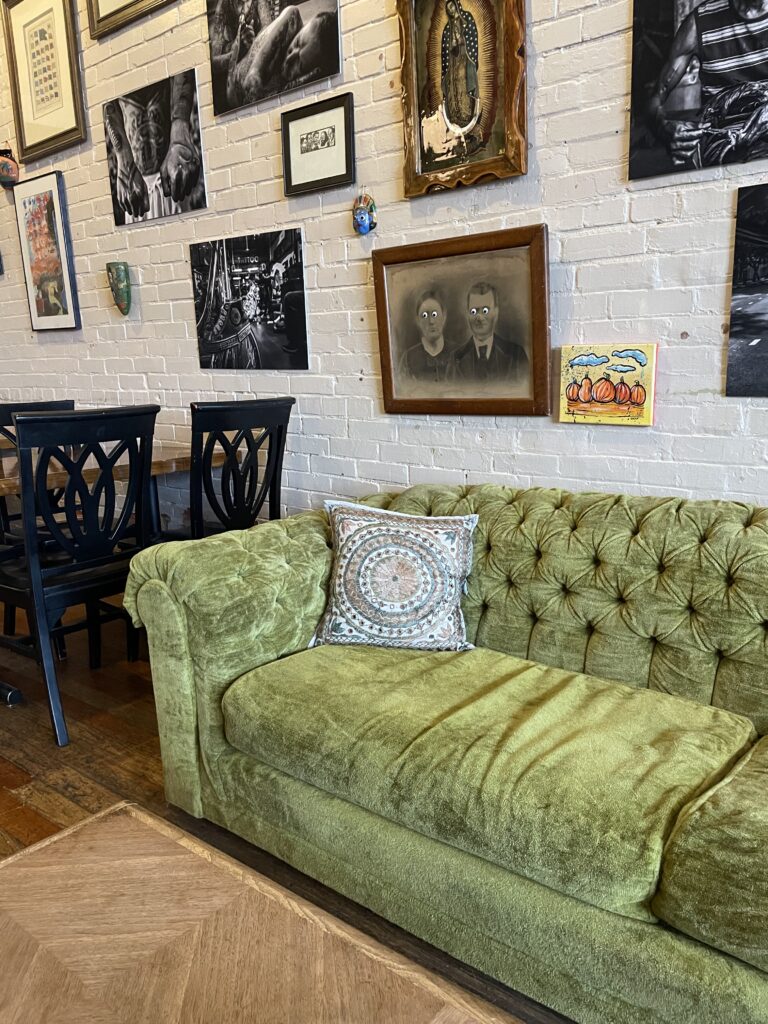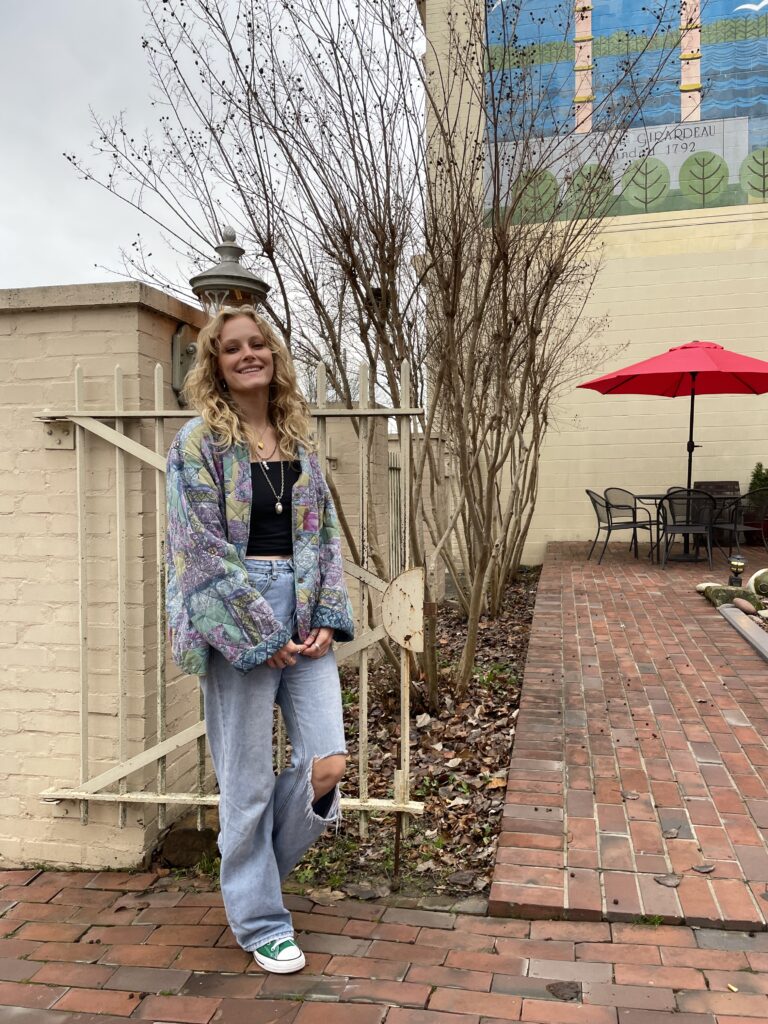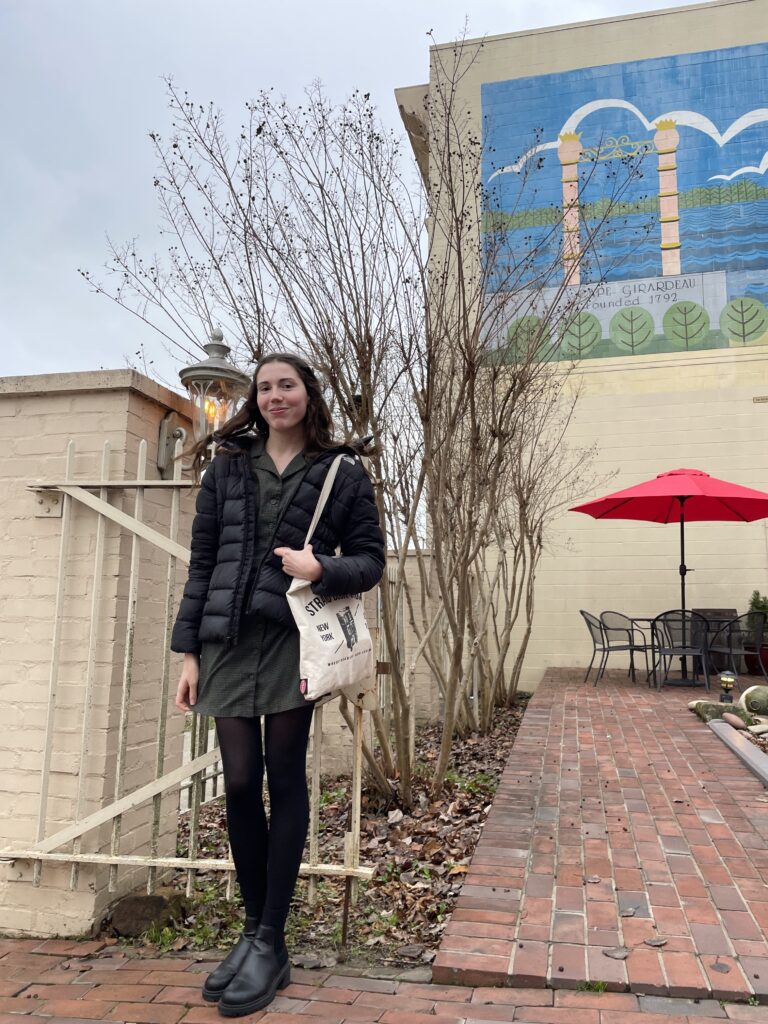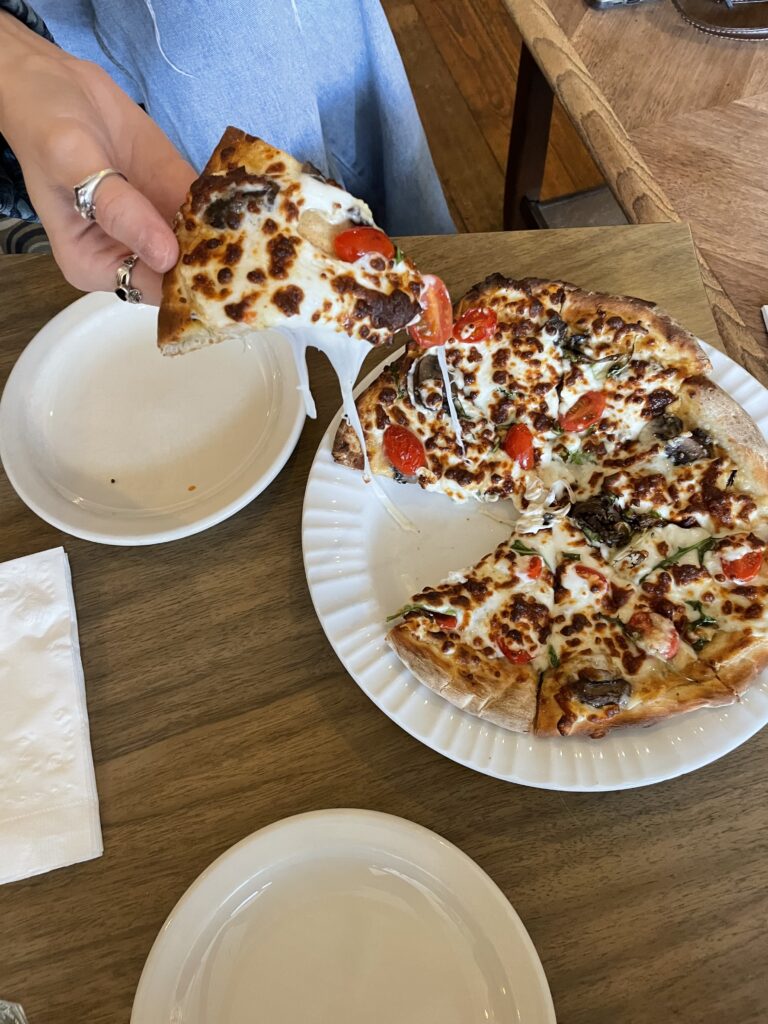By Jasmine Jones
At some point during college, I followed Emma Fritsche on Instagram. I can’t remember exactly when. I click so many profiles in such a short amount of time, I don’t realize I’m following someone until their photo shows up in my feed, and I think, “Who is this person?”
I’d like to think I followed Emma because she was a SEMO student and I was a SEMO student, but most likely, I followed her because she had cool outfits, went to lots of music festivals, and her life looked fun and perfect — as most Instagram lives do. When we look at pictures of someone, we can’t help it; we write stories in our heads. Our minds automatically fill in the gaps between a stranger’s Instagram posts, creating narratives based on a few images and short captions.
I never met Emma during my time at SEMO, but I was following on social media, watching her life continue whenever her photos showed up in my feed. I decided I should get to know this person whose face kept showing up on my phone. Not only through the photos she posted, but in real life (IRL).
So, I messaged her on Instagram and asked if she wanted to meet. She messaged back, “I would love to meet!” and we set a date.
* * *
It is a suspiciously warm January day when we meet at Ebb & Flow Fermentations, a restaurant in downtown Cape Girardeau. Emma says it is one of her favorite places in Cape. You can learn a lot about a person by the places they love, and I wonder if, in her love of this place, Emma is unique and social, maybe artistic or maybe a fan of artisan beer. But when I ask why she loves this place, Emma simply says she likes to meet friends on the patio in the summer. She also likes the furniture.
I message her on Instagram to say I’m here and sitting on the green couch. My body keeps sinking further into the couch cushions, and the position feels too vulnerable, so I switch to a chair just as Emma walks through the door.
I wave to her so she knows it’s me, even though there’s no one in the room with me. We say hi in the way only strangers who’ve known each other’s images on the internet can say hi, because everyone looks different off-screen, and both parties are trying to figure out what the difference is, but no one can seem to figure it out. I am relieved when our greeting is over. For lunch, we order a flatbread pizza to share. Then, we talk.
We start with the easy questions: Where are you from? What do you do? How long have you been in the area?
I learn Emma is from Red Bud, Ill., a small town of approximately 4,000 people located south of St. Louis. Her last name, Fritsche, is pronounced like “itchy,” she says.
She’s currently a student at SEMO graduating in May with a degree in advertising and a minor in fashion merchandising. Before she started school, she says she had to decide between marketing and advertising, but decided to go with the latter because the degree had less math requirements and more creativity.
“Yeah, I got my marketing degree last year,” I say. “It was a lot of math.”
We talk about college and statistics classes we took and how bad we are with numbers. These small links between our lives guide us to the next topic, and soon we are having a conversation. We begin to experience the beauty of talking, of strangers connecting through sentences, one after the other, completely unplanned. Conversation is an accidental art.
Somehow, our sentences drift towards love. We find out both of our boyfriends are overly productive. Both of us are creative, and both of them are in technical fields, hers in biomedical engineering, and mine in finance. I ask where she met her boyfriend and she says on the dating app Hinge.
“There was barely anything on his profile,” she says. “I just had a feeling.”
After only three dates, Emma says they went to the Bonnaroo Music Festival to spend five days camping together in a high Tennessee heat index. She called it a “test” of their relationship; she knew they would either leave with a strong bond or an impending break-up.
At one point, the canopy over their tent broke, and they were left without shade. Emma calls herself an “overly-prepared” type of person, but she couldn’t have prepared for that. She stayed awake instead of taking a nap with her boyfriend and thought of a way to create shade with some duct tape, a tapestry and a folding table.
Her Bonnaroo photos on Instagram don’t tell this story. In the pictures, she is smiling and dancing in gorgeous bohemian outfits. She is posing with her boyfriend in front of rows of hammocks and decorated stages. I remember looking at the photos and thinking it looked luxurious, thinking her boyfriend must be someone she’d known a very long time. But that was not the true story. That was my mind’s fiction.
Our conversation continues. I ask her about the vintage shop Annie Laurie’s, because I see her on their Instagram account all the time. She says she works there four days a week. She says vintage clothing is her weakness, and her job doesn’t help her shopping addiction. Someday, she’d love to have her own vintage clothing shop.
“I looked at your Instagram, too,” Emma says. “You travel a lot, right?”
I laugh and tell her I don’t travel that often; it’s just the only time I think of posting on Instagram. I wonder if this is a lie as soon as I say it. Maybe I want people to believe I’m constantly traveling.
Emma filled in the gaps of my life based on photos, and the only images she had were of me in France or New York. What was she supposed to think? Her question reminds me of when I created three separate Instagram posts of my New York City trip in November, and people wouldn’t stop asking if I’d moved.
“No,” I remember telling them. “Why would you think that?”
But what else would they think? I never post photos of myself writing at a desk in Cape Girardeau or watching a movie at home in Jackson. I’m in these places much more often. They are my real life, but my social media presence completely ignores them.
I look down at the table, and our pizza is gone, except for the last lonely slice neither of us want to take. The trash takes it, instead, and I suggest we take a walk by the river. We stroll through downtown Cape Girardeau, crossing streets and weaving through pedestrians.
Before we reach the river walk, a long train barrels through on the railroad tracks in front of the river wall. Suddenly, we’re cut off from the river, and who knows how long a train could go on for: seconds, minutes, hours, decades? It is a guessing game with trains.
So, we meander through the downtown streets, instead. Neither of us knows which streets to turn onto, when to cross the next street or how long this walk will continue for. We weave through the city on instinct, both of us following and leading equally. The passing train blares its horn.
“I always forget Cape is a train town,” I say.
Emma says she never forgets; she can hear the train horns from her apartment, and every time she hears them, she remembers her grandparents’ house. She says her grandparents live two blocks from a railroad, and trains always blare their horns in the middle of the night, waking everybody up.
Instinctively, I make a note of this on my phone. Something about this small anecdote sticks with me. It captures everything I’ve been trying to articulate about social media presence and personhood.
This train story is a true glimpse of Emma’s life. A glimpse that wouldn’t have come up if we weren’t walking around together by actual train tracks. If we weren’t there at the exact moment a train passed. If we didn’t hear its real horn with our real ears.
It is a complete accident, this bit of information I’ve learned about Emma. The type of accident that can only happen out in the world, completely separated from the formulated, careful sharing of social media. Something appeared in the world, and we both responded to it. There was no time to think about what we wanted to share or how we wanted to be perceived. The train was there. And so were we.
All of those Bonnaroo photos and outfit videos and boyfriend selfies on Emma’s Instagram are parts of her life, but they are not the whole. There is much more. An Instagram profile is a small and often inaccurate portrait of a person.
The real person, the model for the portrait, is out here — in the real, imperfect, beautiful world.





